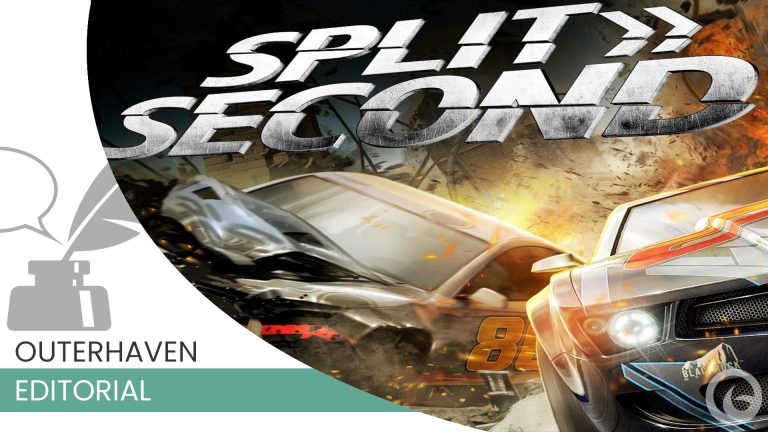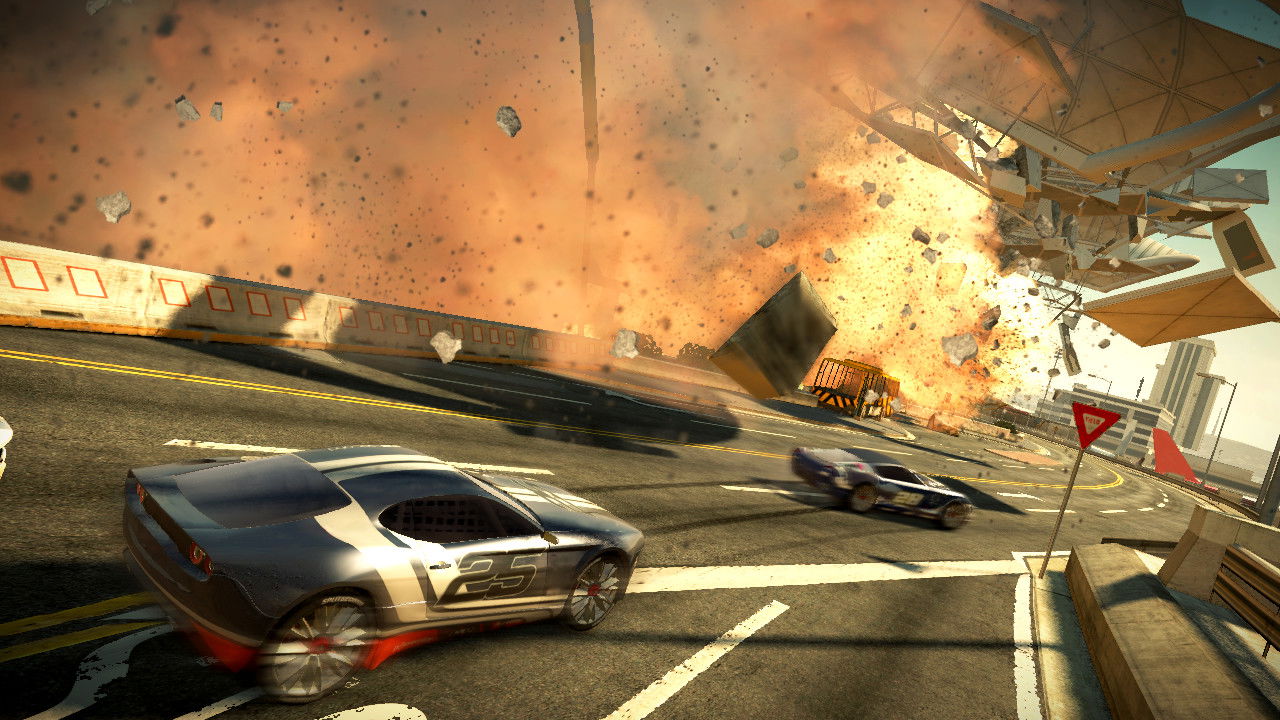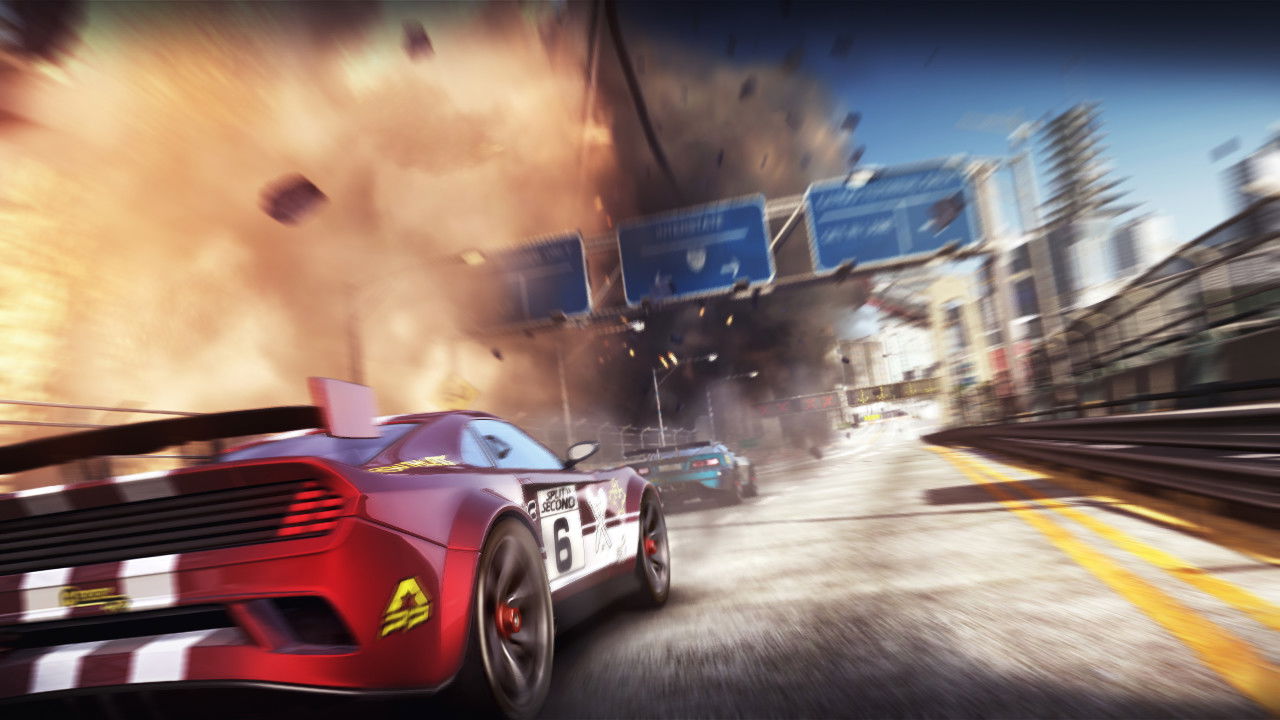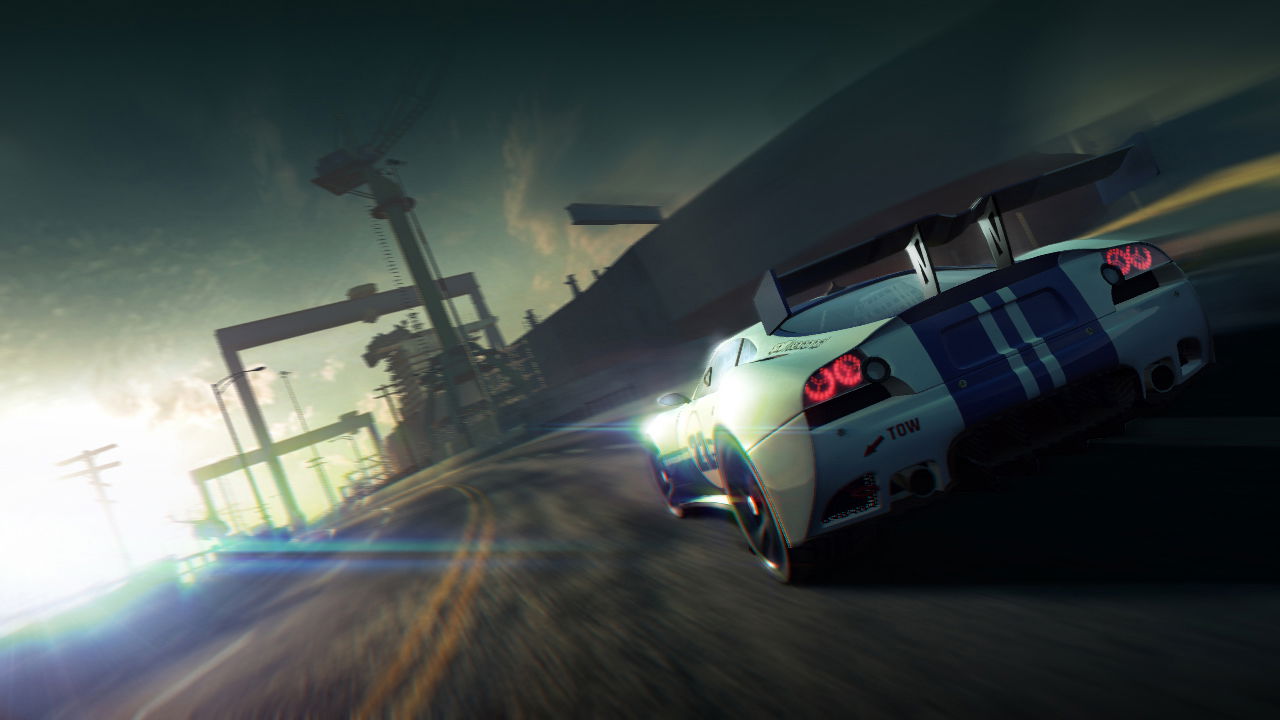I recently found myself reminiscing about games of the past—more specifically, some of my favorite arcade racing titles. And there’s no other game that continues to live rent-free in my head than Disney’s Split/Second. Not because it was some massive franchise, but because it took what games like Ridge Racer and Burnout did so well and just straight-up revolutionized the formula. It was loud, chaotic, stylish, and had just enough strategy to keep me hooked race after race.
Back in the golden era of arcade racers—late ’90s into the early 2000s—racing games were everywhere. You had so many to pick from, including Need for Speed, Daytona USA, Cruis’n USA, Ridge Racer, Burnout, and the like, tearing up the scene. But as action games started taking over the spotlight and with developers now focusing on that genre, the arcade racing genre started fading into the background. That is, until one game came in like a wrecking ball: Split/Second.
Split/Second Wasn’t Just Another Racer
Released in 2010 by Black Rock Studio, Split/Second wasn’t just another racer. It was a straight-up cinematic experience. Think Michael Bay meets Burnout, with every race designed to feel like the finale of a summer blockbuster. You weren’t just drifting through tight corners—you were triggering power plays that exploded bridges, collapsed airport terminals, and rerouted the entire track mid-race. It was chaotic, flashy, and absolutely unforgettable.
What really set it apart was that it did what games like Ridge Racer and Burnout couldn’t. Ridge Racer was known for its slick drifting and arcade speed, but it never evolved past being a flashy time trial game with shallow gameplay. It was fun, sure, but predictable. Split/Second took that same high-speed feel and layered it with chaos, strategy, and spectacle. On the flip side, Burnout had the destruction down to a science, but it was always about crashing opponents, not reshaping the world around you. Split/Second gave players the power to control the entire race environment.
Every lap could change based on your decisions, whether you dropped a crane on your rivals or detonated a dam to redirect the track. That kind of reactive, cinematic gameplay was a leap forward in arcade racing. It wasn’t just about being fast or aggressive—it was about being smart while everything around you exploded.
What It Did Better Than Burnout and Ridge Racer
It often got thrown in the same lane as Ridge Racer and Burnout, but Split/Second did more than just drive fast or trade paint. Where Ridge Racer was all about stylish drifting and flashy visuals, it always felt a bit shallow once you peeled back the speed. There were no surprises, no shakeups—just drift, boost (in the newer games), repeat. Split/Second took the arcade formula and added a layer of controlled chaos. You weren’t just racing; you were managing your power meter, deciding whether to blow up a building to block off the track or save your charge for a bigger, track-changing move. It forced you to think while moving at breakneck speeds.
And yeah, Burnout was the king of takedowns and destruction, but Split/Second turned every race into a literal movie scene. It wasn’t just “crash this car”—it was “drop a cargo plane onto the finish line.” The whole thing was styled like a reality show, and it leaned into that with ridiculous confidence. The explosions weren’t window dressing—they were gameplay. Burnout felt aggressive. Split/Second felt tactical and theatrical.
While the game was firing on all cylinders, so was the criminally underrated soundtrack. Composed by Marc Canham, the score amped up the intensity with pulsing percussion, rising strings, and that perfect “you’re-in-a-blockbustermovie” energy. It matched the on-screen madness beat for beat, and honestly, the soundtrack still holds up today. It’s one of those rare game scores that deserves more love and probably could’ve sold as a standalone album. Seriously, just hit up YouTube and listen to the many albums created by fans of the game. It’s some epic stuff.
What Disney Did To Split/Second Was Wrong
Despite a few performance hiccups and rubber-banding that could be frustrating, Split/Second was a gem of an arcade racing game. It reviewed decently, gained a cult following, and fans were hyped for what could come next. It was an amazing racing experience that no one else had thought of. And that’s when Disney dropped the ball. That’s it. Game Over.
During that time, Black Rock Studio was reportedly working on Split/Second 2, but in classic Disney fashion (before they really understood gaming), they decided to back away from console game development. The studio went through rounds of layoffs, and by mid-2011, Black Rock was shut down entirely. Just like that, the lights were turned off. The sequel? Canceled. The team? Scattered. One of the most unique racers in modern gaming was left in the dust with zero closure.
No remaster. No sequel. No revival. Just a brilliant one-and-done that still stands as one of the most creative arcade racers ever made.
Split/Second didn’t just deserve better—I feel that it earned it. It did so many things that no other racing game had done, and even today, there hasn’t been a racer that managed to do what Split/Second did. And to me, that really stinks. It had the vision, the execution, and the potential to be something truly special… and it was taken from us way too soon.
Part of me keeps hoping that one day we’ll see a remaster or maybe that someone at Disney will go, “Hey, remember that really cool racing game we did? We should revisit that.” But I’m sure that’s just a fantasy in my head—kind of like Nintendo ever going back and giving us another go at F-Zero… another racing game that’s near and dear to me.
If you’re a racing game fan and you happen to come across a copy of Split/Second for the PlayStation 3, Xbox 360, or decide to pick up a copy on Steam, where it’s heavily discounted right now, you could do worse than to pick it up.





